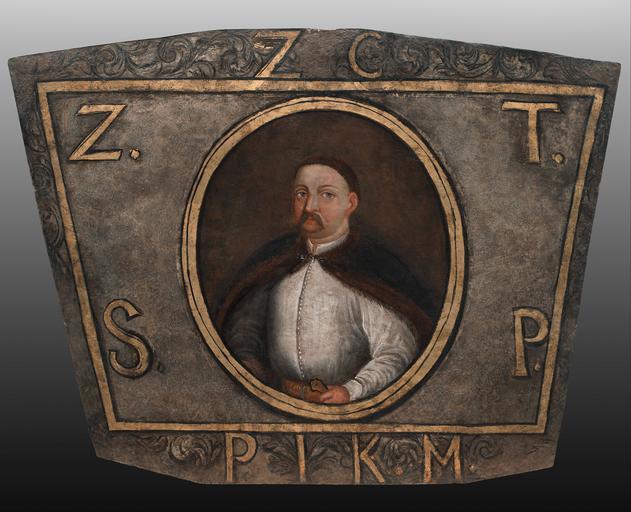MAKE A MEME
View Large Image

| View Original: | Unknown_Polish_artist_-_Coffin_portrait_of_Zygmunt_Tarło_-_Google_Art_Project.jpg (3544x2875) | |||
| Download: | Original | Medium | Small | Thumb |
| Courtesy of: | commons.wikimedia.org | More Like This | ||
| Keywords: Unknown Polish artist - Coffin portrait of Zygmunt TarÅ‚o - Google Art Project.jpg None 432904 Polish /collection/the-wilanow-palace-museum/artwork/coffin-portrait-of-zygmunt-taro-unknown-polish-artist/438074/ 6 Unknown Polish artist Painter /artist/polish-artist/4126217/ 4126217 /collection/the-wilanow-palace-museum/ The Wilanów Palace Museum 412325 http //www wilanow-palac pl/ 12/2/2011 10 03 30 AM /collection/the-wilanow-palace-museum/artwork/coffin-portrait-of-zygmunt-taro-unknown-polish-artist/438074/ 1689 end of 17th c Coffin portraits are regarded as specific items of the culture of Polish Baroque often connected with the term sarmatism The concepts Sarmatians or Sarmatian appeared in Polish historiography as early as the mid-fifteenth century According to assorted chroniclers ™ accounts during the first centuries of our era the Sarmatians ˆ’ inhabitants of the Black Sea steppes - settled down on lands between the Dnieper and the Vistula The original population of this terrain was reduced to slavery During the seventeenth century this view became the official ideology of the gentry and Sarmatian genealogy justified the rule of the gentry in the Commonwealth The political ideal was 'golden liberty' and the model monarch “ a good and just ruler restrained by the Sejm - did not interfere with issues related to the nobility All systemic changes were considered tantamount to tampering with an efficient mechanism The system of the Commonwealth was thought to be perfect and unique a stand which led to the conviction about its superiority in contrast to absolute rule abroad Only a step towards national megalomania and a sui generis obsession with the defence of gentry liberty threatened on all sides Semitism proved to be extremely susceptible to Oriental influences The traditional costume of the nobleman originated in the East The Europeans thus perceived the Sarmatians as representatives of yet another variant of Oriental culture Nonetheless the lands of the Commonwealth were also affected by the Baroque which linked them with the main current of European culture Nonetheless the terrains ruled by Sarmatia ideology differed considerably from Western countries In no other epoch did Poland create such an original and distinct cultural form nor did it depart so far from general European culture oil on copper 330 438074 False 1700 end of 17th c 3/24/2012 2 09 40 AM Wil 1978 http //wilanow-palac pl/coffin_portrait_of_zygmunt_tarlo html Wilanów Palace Museum Wilanów Palace Museum Painting 1680 1710 w440 x h330 mm end of 17th c False 1 23373493975904 Object coffin-portrait-of-zygmunt-taro-unknown-polish-artist Coffin portrait of Zygmunt TarÅ‚o c 440 Coffin portraits are regarded as specific items of the culture of Polish Baroque often connected with the term sarmatism The concepts Sarmatians or Sarmatian appeared in Polish historiography as early as the mid-fifteenth century According to assorted chroniclers ™ accounts during the first centuries of our era the Sarmatians ˆ’ inhabitants of the Black Sea steppes - settled down on lands between the Dnieper and the Vistula The original population of this terrain was reduced to slavery During the seventeenth century this view became the official ideology of the gentry and Sarmatian genealogy justified the rule of the gentry in the Commonwealth The political ideal was 'golden liberty' and the model monarch “ a good and just ruler restrained by the Sejm - did not interfere with issues related to the nobility All systemic changes were considered tantamount to tampering with an efficient mechanism The system of the Commonwealth was thought to be perfect and unique a stand which led to the conviction about its superiority in contrast to absolute rule abroad Only a step towards national megalomania and a sui generis obsession with the defence of gentry liberty threatened on all sides Semitism proved to be extremely susceptible to Oriental influences The traditional costume of the nobleman originated in the East The Europeans thus perceived the Sarmatians as representatives of yet another variant of Oriental culture Nonetheless the lands of the Commonwealth were also affected by the Baroque which linked them with the main current of European culture Nonetheless the terrains ruled by Sarmatia ideology differed considerably from Western countries In no other epoch did Poland create such an original and distinct cultural form nor did it depart so far from general European culture Portret trumienny Zygmunta TarÅ‚y oil on copper special url_id EQGDQXx0pDaZJQ PD-old-100 Google Art Project works by unknown artist Poland Uniform pelisses TarÅ‚o family | ||||